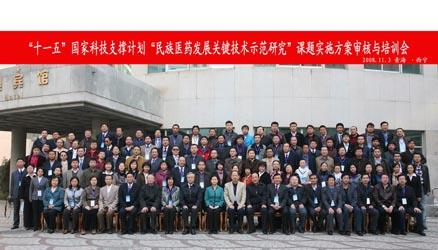
A research project on the demonstration of key technologies for developing medicines and pharmacy of Chinese minorities will soon be started at the CAS Northwest Institute of Plateau Biology (NWIPB). A forum to appraise its implementation approaches was held recently in Xining, capital of northwest China's Qinghai Province.
As a major initiative for the National Key Technology R&D Program during the 11th Five-year Plan period (2006-2010), the 29.14-million-yuan (about $4.15 million) project will be coordinated by NWIPB under the management of the State Administration of Traditional Chinese Medicine and the State Ethnic Affairs Commission.
Consisting of 10 research components, the three-year project is to implement the studies in three main aspects: evaluation of the clinical effects of the Tibetan, Mongolian and Uygur medicines on treating some diseases that they are good at, and their safety and traditional preparation skills; studies of the unique therapies of the traditional medicines popularly practiced by Zhuang, Dai, Korean and Miao peoples, and their techniques for processing toxic herbs; and rescue work of the medical legacies of Chinese minorities, including the knowledge of famous physicians and literature.
Centered on the succession of the distinctions of the traditional ethnical medicines, the project is designed to explore the characteristic therapies developed by different minority nationalities in this country, and their unique medication preparing and processing techniques, according to Dr. WEI Lixin, a NWIPB researcher and the chief coordinator of the project.
In addition to some medical systems under relatively intensive studies from 12 ethnical populations of Tibetan, Mongolian, Uygur, Dai, Zhuang, Korean, Miao, Yi, Tujia, Hui, Yao and Qiang, this project will address medical systems of such minorities as Hani, Bulang, De'ang, Lisu, Nu and Achang. Their ethno-medical legacies are in the need of urgent salvage and preservation.





